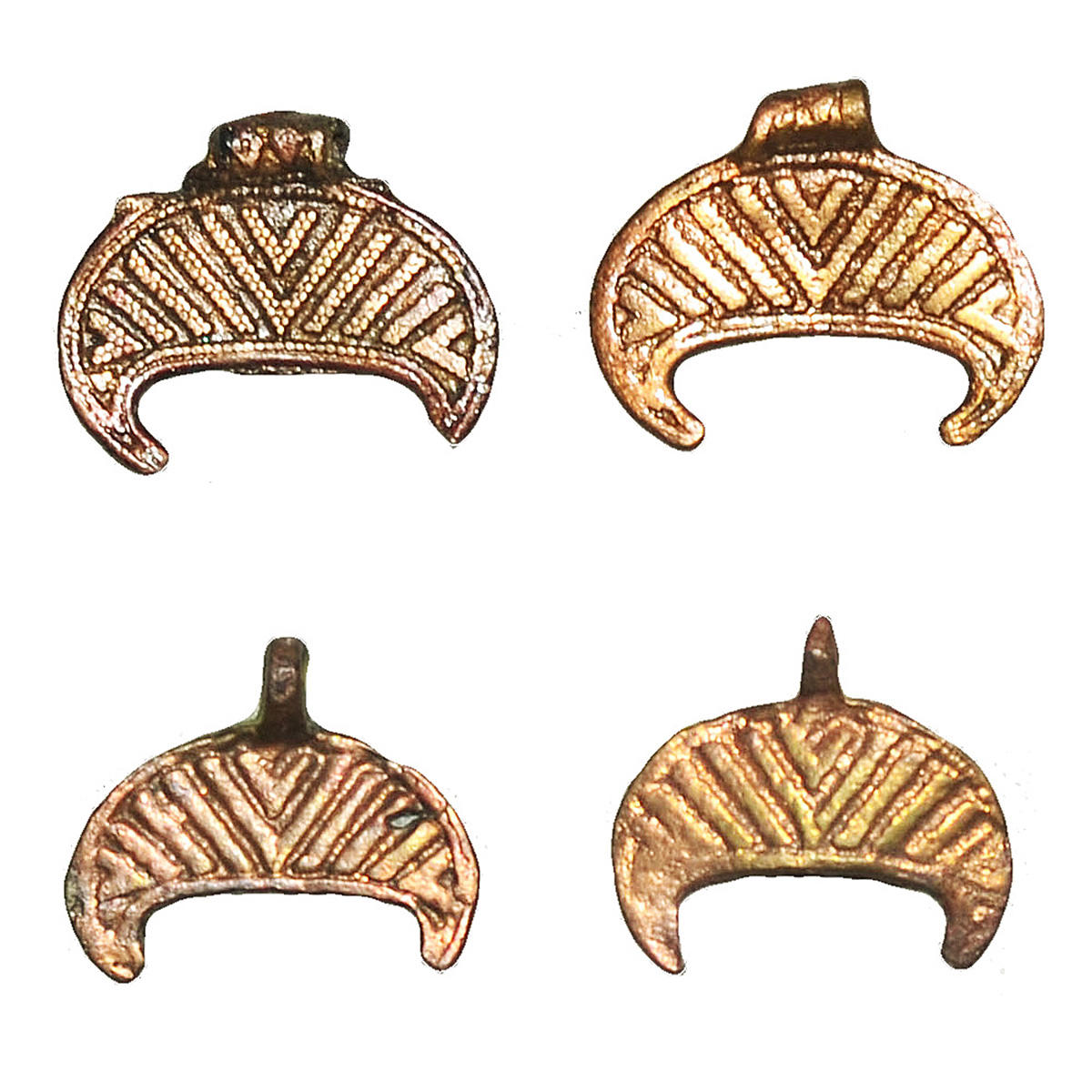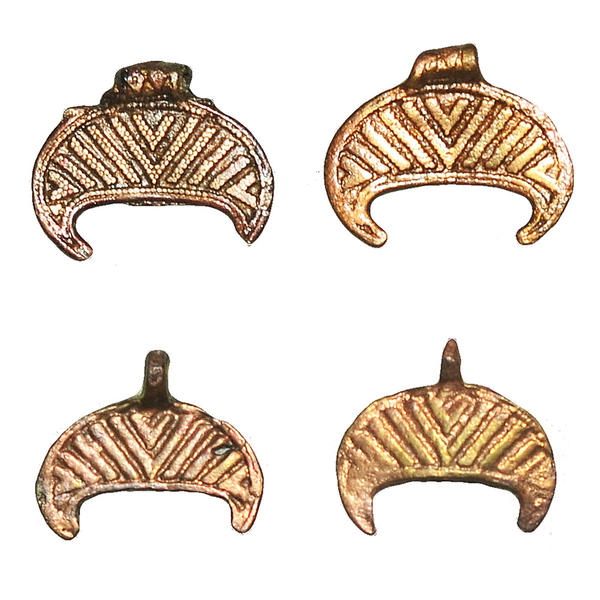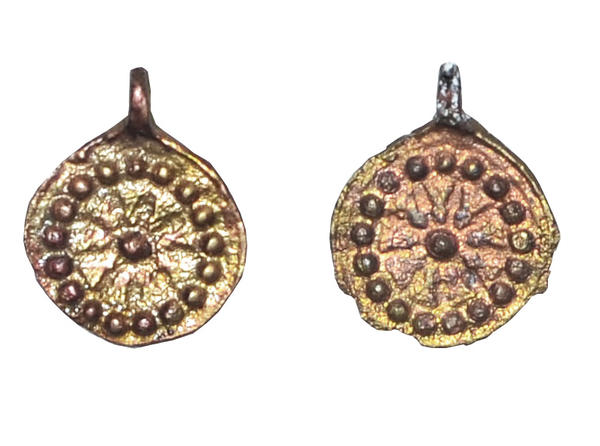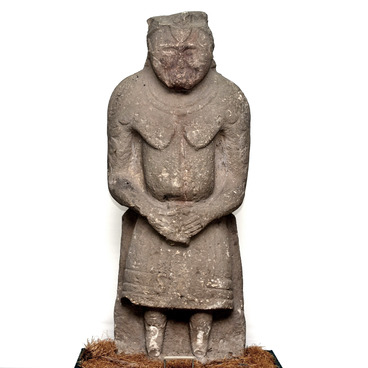Bryansk State Regional Ethnography Museum holds the collection of pendants with symbolic figures of the Sun and the Moon. In ancient times, they were considered averters for Slavic women. They often decorated necklaces, headgear and temple rings, sometimes they were worn as earrings. Archeologists used to find sets of 10-13 pendants in burial mounds.
Lunula pendants and solar symbols
Creation period
9th – 12th centuries
Technique
Вronze, casting, embossment
Collection
Exhibition
3
Open in app#1
Lunula pendants and solar symbols
#2
#12
Fyodor Zavernyayev, and archeologist and local studies expert, passed the collection to the museum. He found all of those pendants in 1970-s during excavations of burial mounds near Peklino village of Dubrovsky district of Bryansk region. Zavernyayev determined that the pendants were made during the period of 10th – 12th centuries. In those times, Russian people became Christians, but continued some of the pagan practices: they could be wearing simultaneously ancient amulets and medallions depicting saints.
#5
Archeologists also found some other bronze jewelry in Peklino burial mounds: bracelets, necklaces, rings, clothes claspers. All of them were made during the 11th – 13th centuries. The archeologists delivered them to museum collections of Bryansk region.
#9
Lunula pendants
The crescent-shaped pendant with horns looking down was called lunula. It was considered a powerful averter for women symbolizing fertility. Lunula pendants could be of various shapes and sizes. The most popular ones in Bryansk region were cast pendants with broad ‘horns’. They were decorated with geometric ornament symbolizing the ploughed land. Some lunula pendants have granulation work — decorations of small globules. They were rolled manually from wire and then soldered to the pendant.
#8
After Christianization of Ancient Russia, women started wearing lunula pendants as symbols of Virgin Mary. Sometimes such averters carried the image of cross. Virgin Mary was worshiped as the patroness of the human race. In their prayers, women asked her for the wellbeing of their families, about giving birth to healthy children and about healing of the sick.
#10
Round pendants depicted the Sun, which was considered the symbol of light, warmth and life. Both women and men could wear pendants with solar signs. Sometimes children wore them as protection from evil forces, maladies and ill-wishers. Both solar and lunula pendants were decorated with carving and granulation work.
Round pendants depicted the Sun
#11
Most often, the pendant amulets were made of bronze, because this was the commonest and the best accessible metal. Archeologists also found items of bronze and silver alloy in burial mounds. Lunula and solar pendants from pure silver were not common: only women from rich and noble families wore them.
#13
State budgetary cultural institution Bryansk State Regional Ethnography Museum
read morehide
00:00
00:00
1x
Lunula pendants and solar symbols
Creation period
9th – 12th centuries
Technique
Вronze, casting, embossment
Collection
Exhibition
3
Open in app
Share





